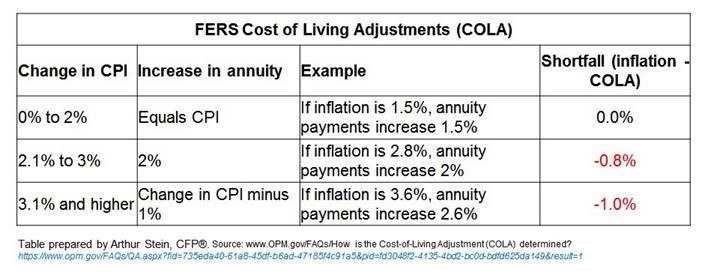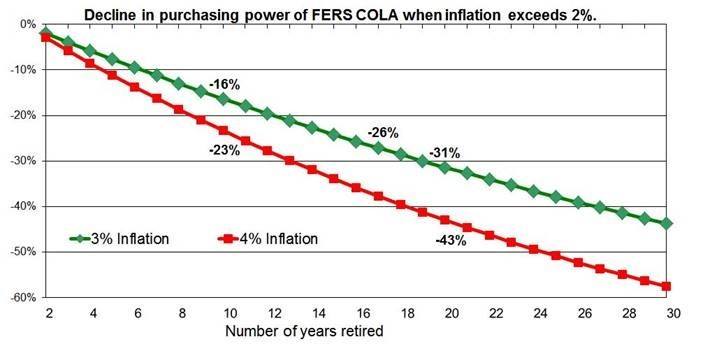
Will retirement mean lifetime diet?
Most current federal retirees, and a small percentage of folks still on the payroll, are under the old Civil Service Retirement System. It offers a generous...
Most current federal retirees, and a small percentage of folks still on the payroll, are under the old Civil Service Retirement System. It offers a generous lifetime annuity that is based on salary and length of service, and it is fully indexed to inflation.
If living costs rise, as measured by the Bureau of Labor Statistics, folks retired under the CSRS program get a full cost of living adjustment each January. If there is deflation the annuities are not reduced.
But for a growing number of newer retirees, and for most people in government today, life under the Federal Employees Retirement System will be different. Income from their TSP investments will play an important role in financing retirement, and the fact that they are under a diet COLA formula means over time they will fall further and further behind inflation.
That’s the subject of today’s Your Turn radio show, which airs 10 a.m. EDT on www.federalnewsnetwork.com and on 1500 AM in the Washington, D.C. area. My guest is financial planner Athur Stein who will talk about the long-term financial future of federal retirees who don’t have full inflation-protection. He calls it, “A ‘Diet COLA’ that isn’t healthy”:
“An important benefit of the federal annuity (pension) is the cost of living adjustment. The COLA increases the annuity benefit each year there is a positive inflation rate. The COLA is based upon the Consumer Price Index (CPI-W) from the third quarter average of the previous year, to the third quarter average for the current year. COLAs are effective each Dec. 1 and appear in payments on the first business day of January, which is when December benefits are paid.
“CSRS retirees receive a full COLA. If inflation hits 5%, their annuity increases 5%. The Social Security COLA works the same way.
“The COLA for FERS retirees is called a ‘diet COLA.’ The purchasing power of the annuity falls anytime inflation exceeds 2%. That is because the percentage increase in inflation is higher than the percentage increase in annuity payments. Monthly payments increase but purchasing power declines.
For example, the COLA that took effect in January was 2.8% for CSRS retirees but 2% for FERS retirees. Here is a hypothetical:
“After 20 years of either 3% or 4% inflation, the FERS annuity would have lost either 31% or 41% of purchasing power. Because of reduced purchasing power, FERS retirees are more likely to need income from their Thrift Savings Plan and other investments to supplement their annuities during a long retirement.
“That is why declining annuity purchasing power can make the TSP and other investments critical to retirement security.”
Nearly Useless Factoid
By Amelia Brust
Cows produce more milk while listening to slower, calmer music rather than fast tempos, likely because it reduces stress. Researchers at the University of Leicester in England saw better results from playing Beethoven’s “Pastoral Symphony” and Simon & Garfunkel’s “Bridge Over Troubled Water,” versus Mud’s “Tigerfeet” and “Size of a Cow” by Wonderstuff, for example.
Source: BBC
Copyright © 2024 Federal News Network. All rights reserved. This website is not intended for users located within the European Economic Area.
Mike Causey is senior correspondent for Federal News Network and writes his daily Federal Report column on federal employees’ pay, benefits and retirement.
Follow @mcauseyWFED







